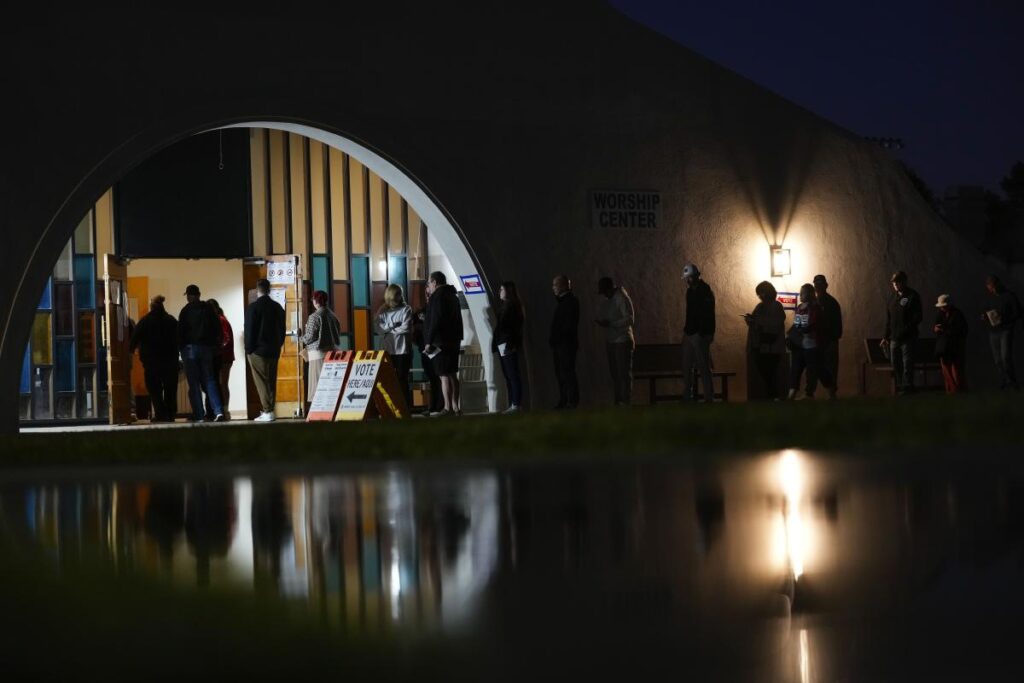Voters across the United States have taken to the polls in a historic presidential election, with Donald Trump and Kamala Harris as the main candidates. The day is marked by inclement weather, particularly in the Midwest, where rain falls heavily and forecasters predict potential storms later in the day. Despite these challenging conditions, citizens demonstrate remarkable resolve and commitment to exercising their democratic rights, lining up at polling places even before dawn. This turnout illustrates the high stakes of the election and the enthusiasm driving many Americans to participate.
One poignant story comes from Scranton, Pennsylvania, where Liza Fortt, a 74-year-old Black woman, arrived at her polling location in a wheelchair. Overcoming physical challenges and health concerns, she expressed her determination to vote for Kamala Harris. Fortt described her pride and excitement about the opportunity to vote for a Black woman in a presidential race, emphasizing the significance of such a moment in American history. Her sentiment captures the broader feelings of many voters who view this election as a pivotal point for representation and inclusivity in the highest offices of the nation.
On the Republican side, JD Vance, the vice presidential candidate, also made his way to the polls in Cincinnati. Vance expressed optimism as he and his wife cast their votes, indicating a sense of confidence in his party’s chances in the election. His remarks reflect the fervent energy among Trump supporters, who are eager to see their candidate reaffirmed in the presidency amidst a competitive and charged political landscape. Vance’s feelings are emblematic of many who have rallied around the Trump campaign, highlighting the divide in voter sentiment as the election unfolds.
As election day progresses, lines grow longer and anticipation builds across the country. Polling locations in numerous states are bustling with activity, a visual representation of a nation deeply engaged in the democratic process. The commitment displayed by voters like Fortt and Vance showcases the varying motivations behind their choices, revealing personal stories intertwined with broader themes of race, gender, party loyalty, and the quest for transformative change in American governance.
In addition to the compelling tales of individual voters, this election underscores the significance of a moment in time where various societal factors converge. Issues such as race relations, women’s rights, and class disparities come to the forefront as voters weigh their options. The outcome could shape policies that impact a diverse array of communities, and the presence of candidates like Harris and Trump sends distinct signals regarding the future direction of American politics.
As the sun sets on election day, the results will not just signify a victory for one candidate over the other, but also reflect the values, hopes, and concerns of a nation at a crossroads. The participation of voters like Liza Fortt, who braved physical limitations to make her voice heard, stands as a testament to the enduring spirit of democracy. This election will likely linger in the minds of Americans for years to come, as it offers a moment of reflection on progress, representation, and the fundamental essence of voting in the United States.

